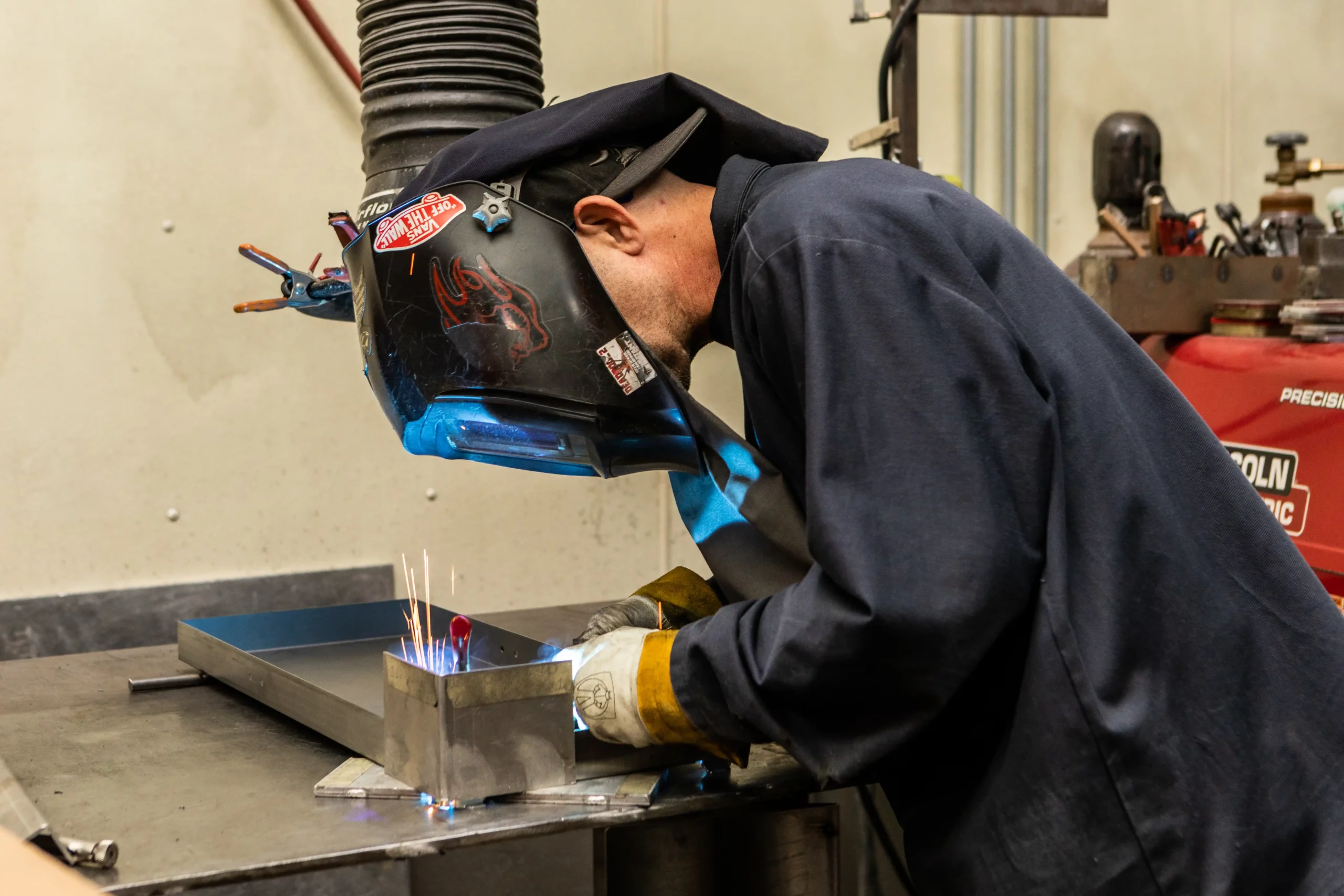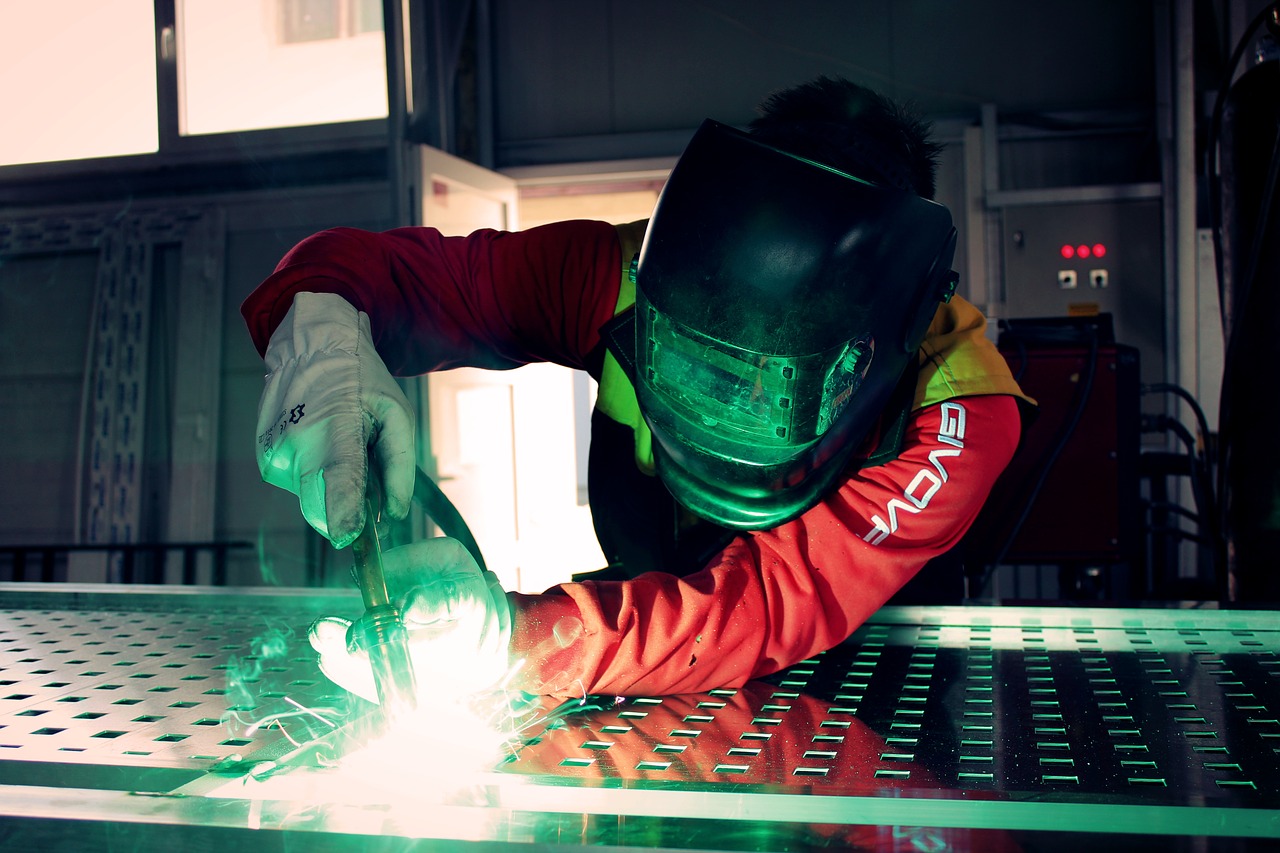Field guide for weld distortion by Belgrade Fabrication
Wiki Article
All About Welding: Key Insights Into Techniques and Finest Practices for Success
Welding encompasses a selection of techniques, each suited for specific materials and applications. Understanding these methods, such as GMAW, SMAW, and TIG, is necessary for attaining suitable results. The appropriate devices and safety methods can not be overlooked. As prep work and repairing play essential duties in the welding procedure, mastering these components can substantially boost the high quality of the end product. What are the essential elements that assure a successful weld?Recognizing Different Welding Techniques
Welding strategies include a selection of techniques, each suited to particular applications and products. Amongst one of the most usual techniques are Gas Metal Arc Welding (GMAW), Secured Metal Arc Welding (SMAW), and Tungsten Inert Gas Welding (TIG) GMAW, also understood as MIG welding, is prominent for its rate and flexibility, making it optimal for slim products. SMAW, or stick welding, is preferred for its simplicity and effectiveness in outside atmospheres, specifically with thicker steels. TIG welding provides precision and control, making it appropriate for detailed work and non-ferrous metals (Montana Mobile Welding and Repair). Each technique has its unique advantages and considerations, permitting welders to choose the most effective technique based on the task's needs, material type, and preferred end results. Understanding these techniques is essential for successful weldingImportant Welding Equipment and Tools
While various welding techniques call for certain skills, the right equipment and tools are equally important for attaining quality outcomes. Important welding devices includes welding makers, which vary relying on the technique-- such as MIG, TIG, or stick welding. Safety equipment, consisting of gloves, helmets, and aprons, guarantees safety and comfort during the process. Additionally, fixtures and clamps aid safeguard materials in area, making certain precision in welds. Consumables like welding rods, cord, and protecting gas are also essential components that affect the high quality of the weld. In addition, tools such as cutters and grinders facilitate surface prep work and post-weld ending up, adding to a professional result. Spending in high-grade tools inevitably improves the efficiency and effectiveness of welding jobs.Safety Practices in Welding
Proper security methods are necessary in the welding market to safeguard workers from possible hazards. Welders have to use suitable personal safety equipment (PPE), including safety helmets with proper shading, gloves, and flame-resistant clothes. Appropriate ventilation is crucial to minimize exposure to damaging fumes and gases generated during the welding procedure. Additionally, employees must be trained in the proper handling of welding tools to avoid crashes. Fire precaution, such as maintaining combustible products away from the welding area and having fire extinguishers easily offered, are necessary. Normal evaluations of equipment and work spaces can aid identify prospective hazards prior to they lead to accidents. By sticking to these security practices, welders can create a much safer working atmosphere and minimize risks connected with their trade.Readying Materials for Welding
Preparing materials for welding is an important action that significantly affects the quality and stability of the end product (Montana Mobile Welding and Repair Belgrade Fabrication). Appropriate preparation includes cleansing the surface areas to remove impurities such as oil, dirt, and rust, which can compromise the weld. Strategies such as grinding, fining sand, or using solvents are typically employed to attain a tidy surface area. In addition, ensuring that the products mesh snugly is crucial; spaces can result in weak welds. It's likewise essential to think about the alignment and positioning of the elements, as this will certainly affect the convenience of welding and the last end result. Choosing the ideal filler material and making certain compatibility with the base steels is necessary for attaining solid, long lasting welds.Tips for Achieving High-Quality Welds
Achieving top notch welds requires attention to information and adherence to finest techniques throughout the welding process. Correct joint preparation is crucial, making certain surfaces are tidy and complimentary from impurities. Picking the proper filler material and welding technique based upon the base steels is vital for perfect bonding. Keeping regular travel speed and angle while welding can stop problems and promote uniformity. Additionally, controlling weblink warm input is necessary; too much heat can result in bending and deteriorated joints. If needed, frequently examining the welds during the process permits for prompt adjustments. Lastly, using suitable post-weld webpage treatments, such as cleansing and tension relief, can improve the toughness and integrity of the weld, inevitably ensuring a successful outcome.Repairing Common Welding Issues
Welding often provides obstacles that can affect the high quality and integrity of the final item. Typical concerns such as porosity, inconsistent weld grains, and getting too hot can emerge, each requiring details repairing methods. Understanding these troubles is vital for welders to improve their skills and accomplish excellent results.Porosity Problems Described
Although porosity can often be neglected, it continues to be a vital concern in welding that can compromise the stability of a completed product. Porosity describes the existence of little gas pockets within the weld grain, which can lead and compromise the joint to premature failing. This issue normally occurs from pollutants, dampness, or improper shielding gas protection during the welding process. To alleviate porosity, welders ought to verify that the base materials are tidy and completely dry, utilize appropriate shielding gases, and maintain constant welding parameters. Consistently inspecting the devices and environment can likewise aid determine potential problems prior to they show up in the weld. Resolving porosity successfully is vital for achieving strong, resilient welds that satisfy top quality criteria.
Inconsistent Weld Beans
Inconsistent weld grains can significantly affect the high quality and stamina of a completed item. Different elements add to this issue, consisting of inappropriate traveling rate, inaccurate amperage setups, and inconsistent electrode angles. When the welder relocates as well promptly, a grain may appear narrow and lack infiltration, while relocating too gradually can trigger extreme build-up. Additionally, utilizing the wrong amperage can lead to either undercutting or too much spatter, both of which compromise weld integrity. The welder's strategy, such as inconsistent lantern motion, can likewise cause unequal bead look. To minimize these problems, welders ought to concentrate on maintaining constant, controlled motions and making sure correct tools setups to attain harmony in their welds. Uniformity is key to achieving reputable and solid welds.Getting Too Hot and Bending Issues
Extreme heat throughout the welding procedure can lead to considerable overheating and buckling problems, impacting the structural honesty of the work surface. These problems commonly show up as distortion, which can endanger alignment and fit-up, making additional setting up testing. Aspects adding to overheating consist of the selection of welding criteria, such as voltage and take a trip rate, along with the kind of have a peek here material being welded. To mitigate these issues, welders must maintain constant traveling speed and appropriate warm input while keeping track of the work surface temperature. Additionally, pre-heating or post-weld warm therapy can assist minimize anxieties brought on by quick cooling - Welding. Normal inspection and adherence to best techniques are vital in stopping getting too hot and ensuring the durability and reliability of bonded structuresRegularly Asked Concerns
What Are the Job Opportunities in the Welding Market?
The welding sector offers diverse job chances, including settings as welders, examiners, engineers, and instructors. Specialists can work in production, building, aerospace, and automotive markets, gaining from solid demand and affordable incomes in various functions.Exactly How Can I Boost My Welding Speed Without Compromising Quality?
To boost welding rate without sacrificing high quality, one should practice effective strategies, preserve equipment, maximize setups, and improve hand-eye control. Regular training and looking for responses can also significantly add to achieving quicker, top notch welds.What Certifications Are Offered for Welders?
Countless qualifications exist for welders, including those from the American Welding Society (AWS), the National Center for Construction Education and Study (NCCER), and different industry-specific organizations. These qualifications improve employability and demonstrate ability efficiency.Exactly How Does Welding Influence the Features of Metals?
Welding influences the homes of metals by modifying their microstructure, which can bring about adjustments in hardness, ductility, and stamina. Heat input and cooling prices throughout the process greatly affect these material characteristics.Can I Bonded Dissimilar Metals With Each Other?

Report this wiki page